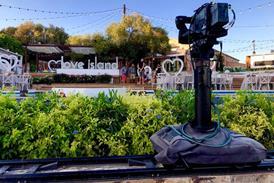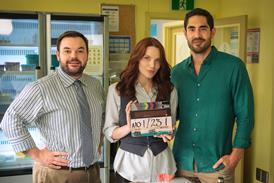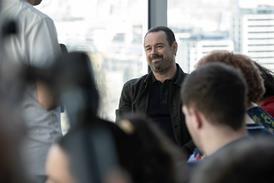Whilst on my travels this week I stumbled across two interesting editing developments.
Both are fairly disparate but both save an editor time - or time in an edit suite - allowing more emphasis to be put on other, more creative things.
One gets broadcast channel video on to websites quickly and easily. The other saves lots of time when post-producing a rushes heavy documentary series.
Less of a lottery
The first is a US initiative for broadcasters who want to get video onto their websites quickly.
Syndicaster is an online video editing and syndication platform.
It was launched in beta in January and the most recent incarnation (version 2.0) lets broadcasters edit and publish video clips from regular broadcasts to their own sites and across the Web within roughly 60 seconds of them airing.
Apparently, channel content can be “accessed in real-time from any computer anywhere at anytime allowing the immediate creation of video clips for online distribution” via their own website, Youtube or a simple, password-protected Web interface (Syndicaster.tv).
The company behind it, Critical Media, does all the video capture, ingest, transcoding, search and ad optimization.
An speech-to-text transcript feed turns up and someone - a web producer or editor or whoever - simply goes to a web browser and selects the portion of the video they want by highlighting the desired section of text.
Then they can download the clip as a WMV or Flash file for republishing to their websites.
It means that the work can be done from home or anywhere with an internet connection.
It also means that craft editors are not wasting their time with fairly menial tasks, as it can be done by just about anyone. And, ultimately, it means that the whole process is a lot quicker.
I can't work out if it's just for the US, but according to company blurb: “Critical Media's Broadcasters Services Group leverages the largest fully-deployed real-time TV ingestion/ digitization infrastructure, processing more than 14,000 hours of TV broadcast around the world every day.”
So I guess not. It does require the broadcaster to be part of a clip syndicate though.
Post-production Heroes
The other development was at Talkback Thames' Newman Street office. In this example, edit producers were using media management software from Cinegy- provided by post house Evolutions - to assemble, from 450 hours of footage, stories for a 20-part daytime ob doc
One ingest created both high and low res versions of the footage and these were stored at Evolutions. Using a standard broadband connection and Cinegy software, the Talkback Thames team - sat at their desktops - were given access to the folders of low res footage. They could choose shots, provide in and out points and assemble stories. Once approved, the same assemblies were made available in full resolution for the editors to do a proper edit and finish on an Avid.
This way of working speeded up the whole operation. Instead of employing runners to log footage, edit producers were brought in who could make editorial decisions that the runner could not.
This meant that logging process was quicker and more effective. In turn it meant that less time was spent in an offline suite and/or watching viewing copies on DVD or VHS, taking notes and passing these on. The logging information - and the assemblies - were simply transferred along with the footage to the editor.
As the editor didn't have to wade through hundreds of hours of footage, time and money was save there too. And a single ingest, meant there was no the need for a conform stage.
All-in-all it allowed the edit of a 20 x 45-minute programme to take two weeks using four suites.
The chances are that working a different way - with viewing copies, spreadsheets and lots of time hauled up at Evolutions - would have required more time or more suites.
This approach benefits both the production company and for the post facility. The producer is able to get his or her post done within the time frame and on budget. And the facility makes better use of its available staff and edit suites. Everyone's a winner.
The point?
Both of these anecdotes are really good examples, to my mind at least, of how thinking very carefully about how we do things and introducing appropriate technology can really make a difference to the way we work as an industry. Both of these approaches - while achieving entirely different things - can be done remotely, both use the web and both save time.
As I said at the beginning of this stream of consciousness, remote, tapeless, web-based, shared storage etc might sound like a bunch of buzz words. But, when you apply the appropriate technology applications to a production workflow it can improve the way we work, making things faster, better, cheaper and more efficient.
Which, at the end of the day, is the purpose of implementing new technology.




























No comments yet